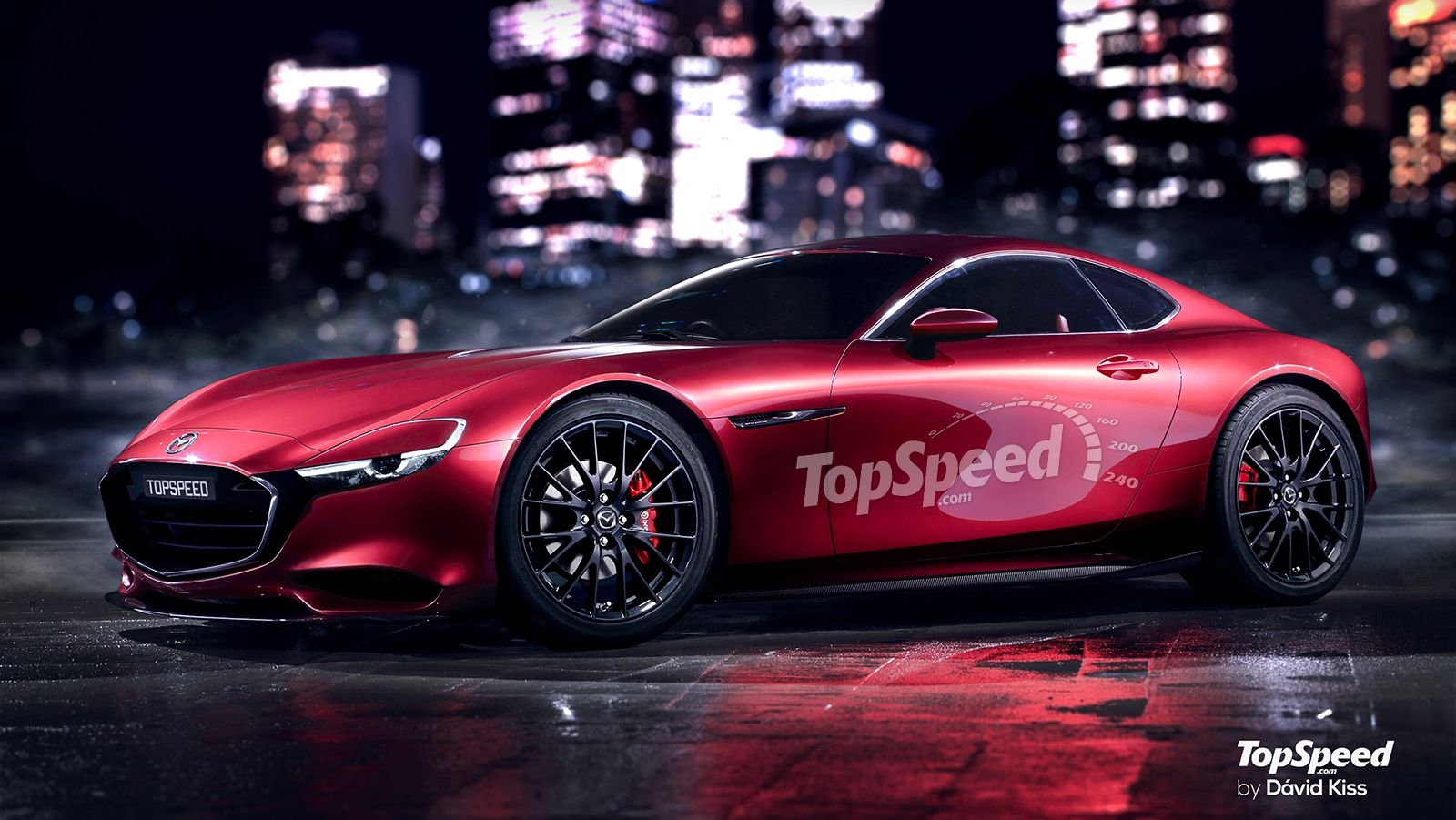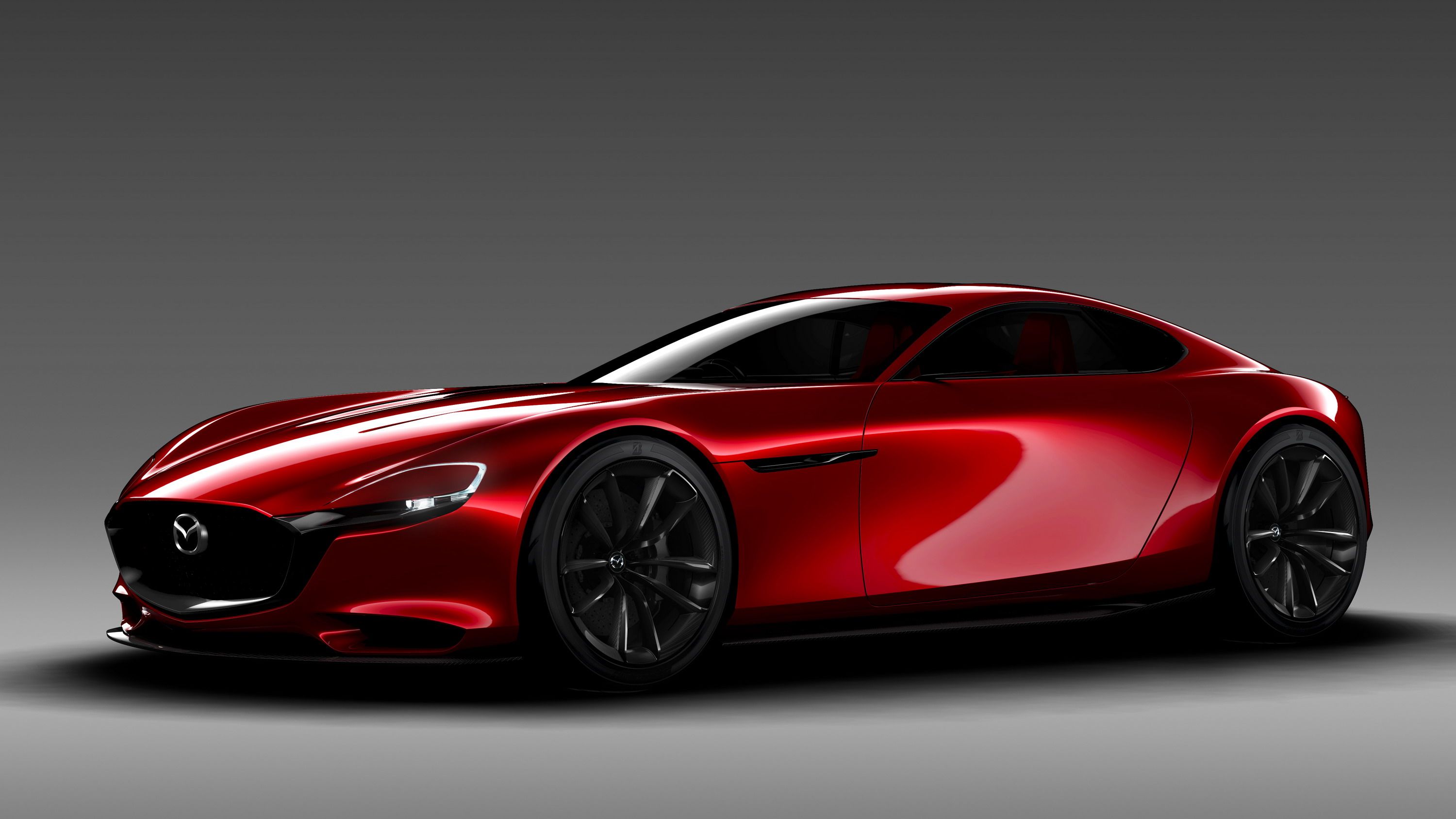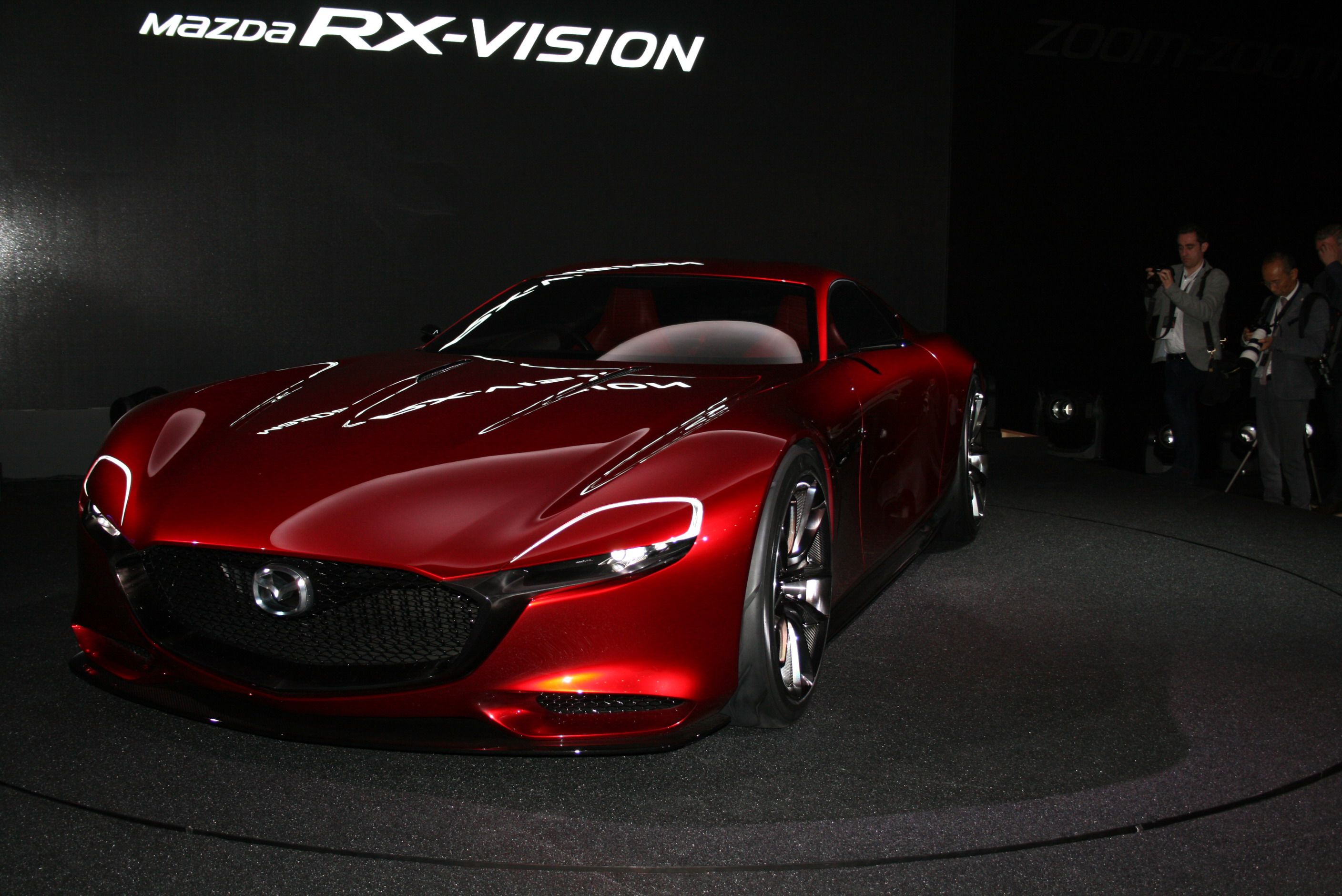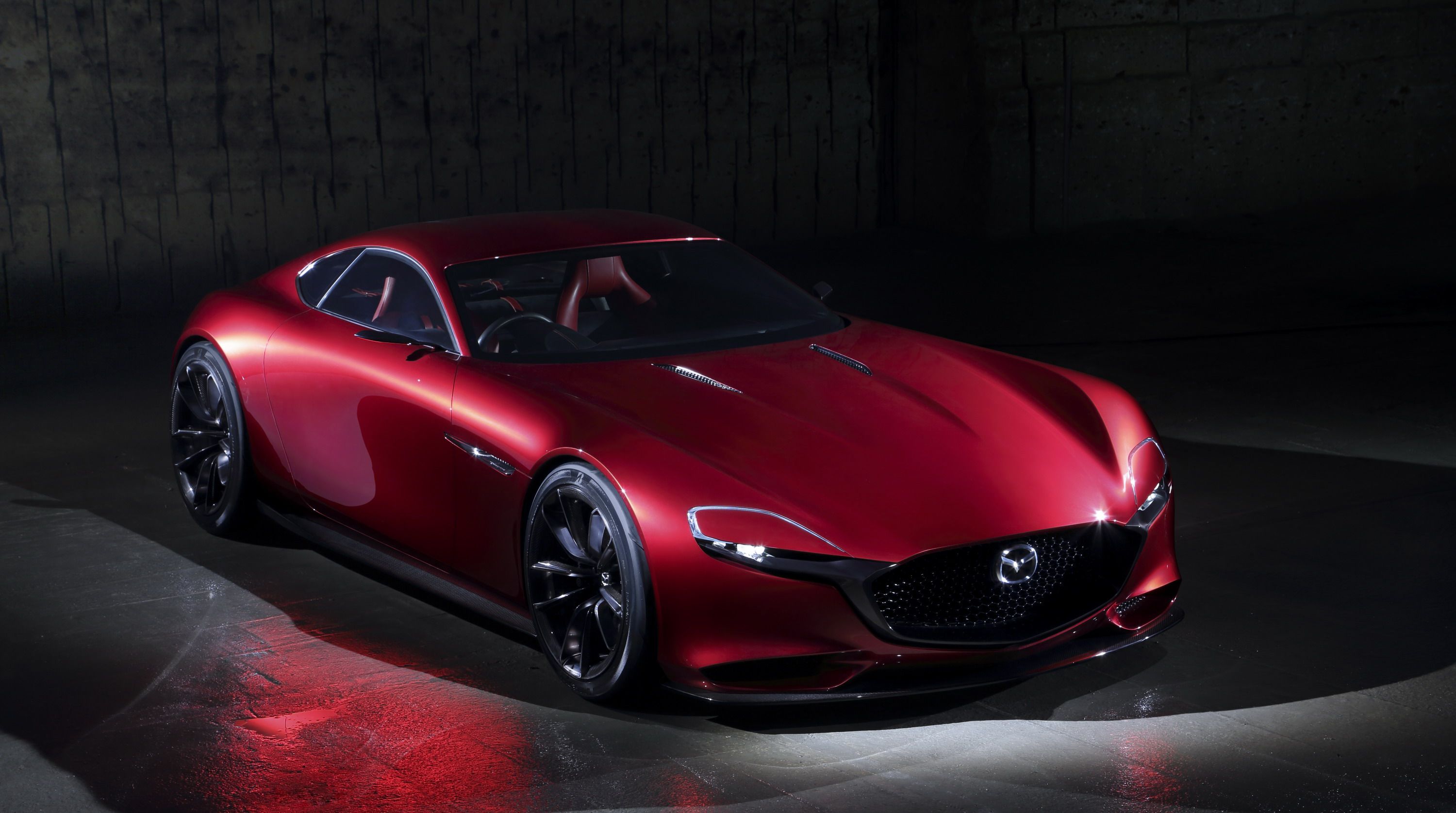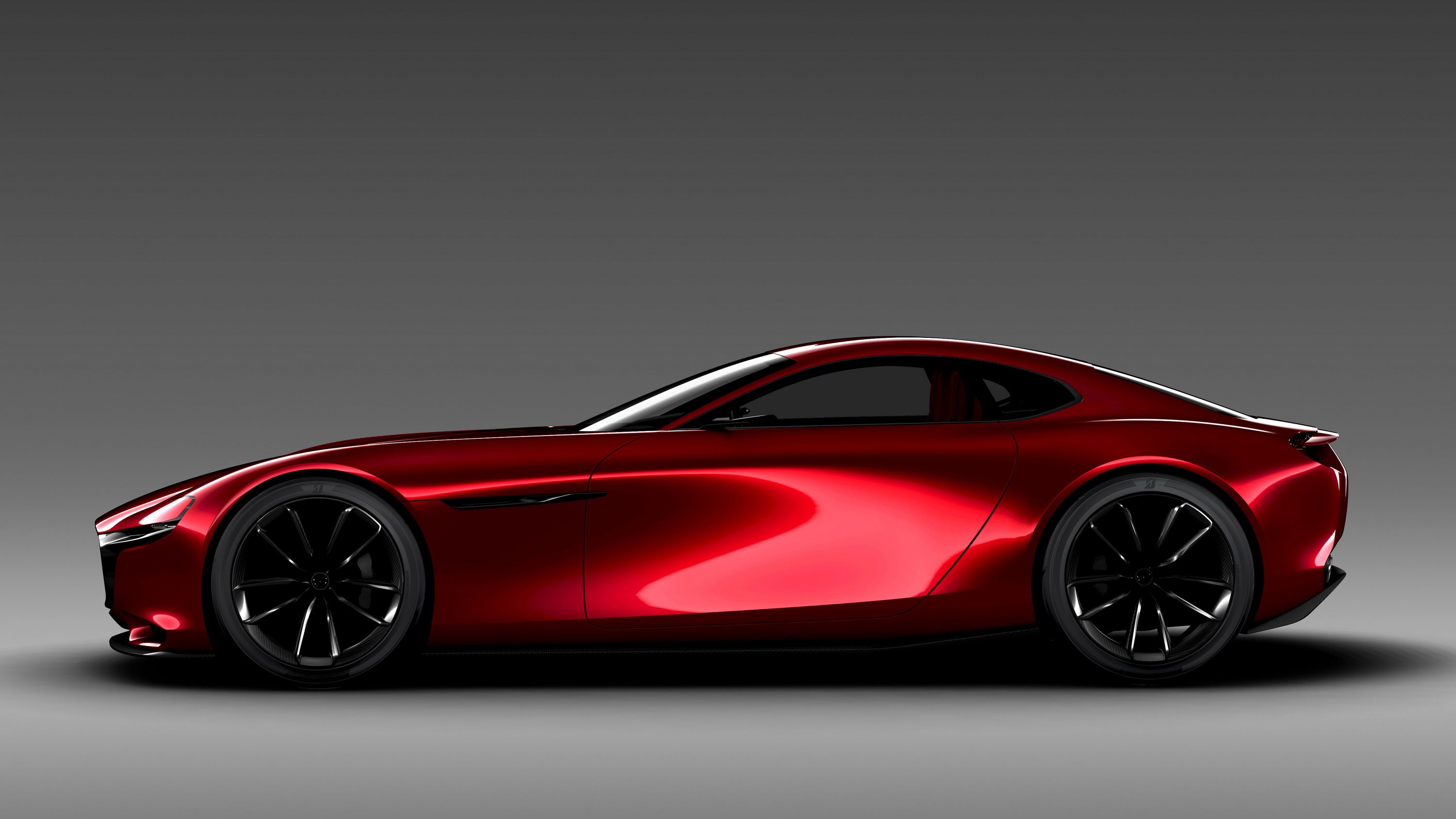New rumors about an upcoming Mazda RX-9 have surfaced online recently. It’s not the first time that a potential successor for the RX-8 has been discussed and anticipated on the internet, so we’re taking everything with a pinch of salt for the time being - Something we advise you to do as well.
However, a fresh report claims that Mazda has been making some moves that suggest the RX-9 might actually not be a soap opera, but something the Japanese carmaker is seriously considering. It’s way too early to drop the hammer on that but bear with us to find out everything we know so far about the so-called Mazda RX-9.
Does a New Patent Secure the Future of the Mazda RX-9?
The Mazda RX-9 rumor mill has been spinning on and off since 2016. The month was December when Road and Track quoted an interview published by Automotive News, where Mazda CEO Masamichi Kogai was crystal clear in saying that the carmaker won’t pursue plans for a sports car larger than the hugely-popular MX-5 Miata. However, Kogai-san also pointed out what would Mazda have to deal with before even thinking of bringing back the RX nameplate.
It is possible that Mazda found the right recipe? That’s hard to tell, but according to U.K.’s Autocar, Mazda filed a chassis patent named “Vehicle Shock Absorption Structure.” The outlet quotes Japan’s Motor Magazine, which talks about “a spaceframe-style structure unlike that currently featured on Mazda’s range of hatchbacks, saloons, and SUVs.”
Moreover, Motor Magazine even spotted a double-wishbone front suspension setup that’s commonly encountered in sports cars and a possible front-mid engine positioning. That’s not all, though. Apparently, the engine bay is rather small, which for some might add fuel to the rumors that Mazda is working on a compact rotary engine that would keep the tradition alive for the so-called RX-9; as we’re sure you recall, the RX-7 and RX-8 both used a rotary engine.
Keeping the car’s weight in check would fall on the shoulders of a mix between CFRP (carbon fiber reinforced plastic) and aluminum.
The same outlet also mentions that Motor Magazine actually had access to a source at Mazda, which confirmed that the new RX-9 will be built on a new, tailor-made architecture which won’t find its way anywhere else in the company’s lineup. As far as the new rotary engine is concerned and for all we know, Mazda’s engineers are still working on it, but its use might be a little different than what most of us expect.
That’s because when asked by Automotive News what will come first, a rotary engine acting like a range extender or a full-blown version of it that would solely power a car, Kogai-san was adamant that “the range extender would be first” because the zero-emissions mandate pretty much forces Mazda to introduce electrification “in the near future.”
Speaking of which, Mazda is preparing an all-electric concept for the 2019 Tokyo Motor Show which also happens to be the carmaker’s first vehicle of this kind. According to Australia’s Drive, the prototype is fitted with a 35.5-kWh battery pack and a front-mounted electric motor with 105 kW (140 horsepower) and 264 Newton-meters (195 pound-feet) of torque on tap.
Moreover, it’s this concept’s road-going fruit that will be given a range extender in the form of a rotary engine, but only for select markets - the U.S. included. It's also worth adding that Mazda’s battery pack isn’t a game-changing bit of technology in terms of capacity. In fact, it slots right between the Hyundai Ioniq EV’s pack (28 kWh) and that of the Nissan Leaf EV (40 kWh). Therefore, it’s the so-called range extender that has got the internet all chatty these days.
Now, with Mazda CEO’s timeline of tasks for the said rotary engine in mind, is it possible that the Japanese carmaker has completed R&D for its use as a range extender and can now move on to greater things - like an ICE-powered sports car that will get this rotary engine as its single source of grunt? Well, if Motor Magazine’s report is accurate and Mazda is laying the early bricks to an RX-badged sports car with a set of patents, then we’re placing the carmaker at the very top of our to-watch list for the coming months or perhaps years.
The first-generation RX-8 was launched in 2002 as a four-door coupe. The U.S. got two versions of it: one had a six-speed manual, 232 horsepower, and 159 pound-feet (216 Newton-meters) of torque, while the other sported a six-speed automatic gearbox, 212 horsepower, and 159 pound-feet (216 Newton-meters) of torque. The six-speed manual version redlined at 9,000 (7,500 rpm in the automatic’s case). Production of the Mazda RX-8 ceased in 2012 in Japan, after Mazda assembled 192,094 units of its sports car. That’s also when Mazda stopped producing the rotary engine.
Further reading
Read our full speculative review on the 2018 Mazda RX-7.
Read our full review on the 2016 Mazda RX-VISION Concept.
Read our full review on the 2001 Mazda RX-7.
Read our full review on the 2011 Mazda RX-8.

